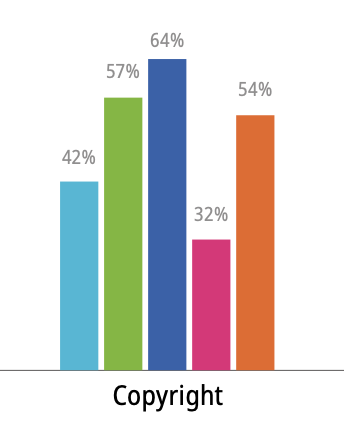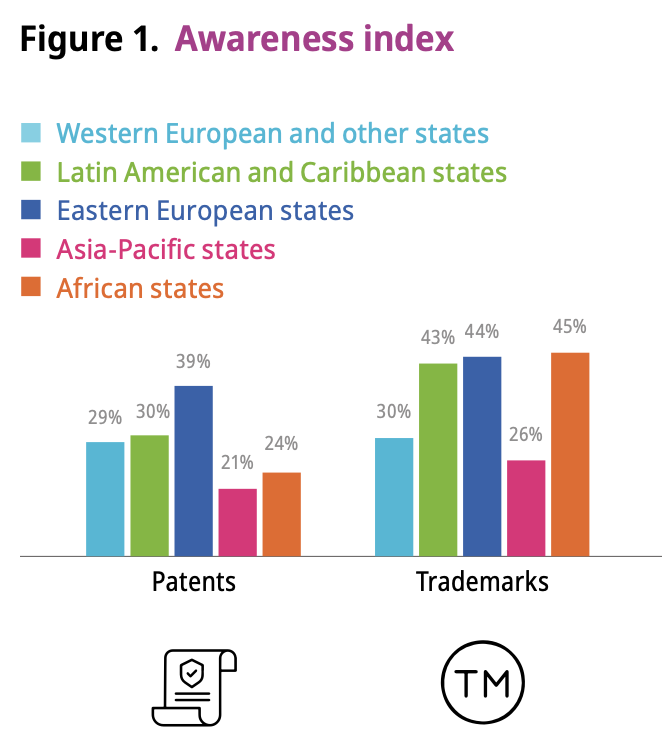A recent study of 25,000 consumers in 50 nations finds that IP rights’ positive effects are most highly recognized in Asia-Pacific, Africa, and Latin America and the Caribbean, but regional and age differences remain a challenge.
The World Intellectual Property Organization (WIPO) Pulse Survey found that while 66.4% of those surveyed perceived IP rights positively, about half of the respondents do not agree, and that significant differences and regional variations exist in attitudes and understanding. Most notable is that younger consumers lag significantly behind in their IP knowledge.
The WIPO Pulse survey did not address why younger persons age 18-34 were less informed about IP rights and their impact. Their level of education, location and affluence did not appear to impact the response.
“What people think and feel is missing from previous conversations about IP. People gather data and analyse IP and make policy. But what people think about IP on the ground is very important”
“The results from the global south are particularly encouraging,” said Daren Tang, Deputy Director General of WIPO, “reinforcing our belief that IP can be a powerful tool not just for industrialized countries, but also for developing and the least developed countries as well.

Strong Beliefs in Asia
“While respondents in all regions recognize the positive impact of IP on the economy, this belief is strongest in Asia-Pacific, Africa and Latin America and the Caribbean. In each case, more than two-thirds of respondents have a favorable view of IP’s impact, higher than in Europe and in North America.
“This positive perception, coupled with strong awareness of IP rights, opens up an important opportunity to broaden engagement with WIPO’s work and show how IP can be a powerful driver of social and economic development in all regions of the world.”
Work is Needed
The report highlights areas where WIPO believes efforts must be increased to “foster IP awareness and bring IP to all.” The organization stated that it and others need to do more to bring IP to our youth, with understanding lagging behind the general population in most regions and categories of IP.
- While 4 in 10 surveyed understand copyright, only 2 in 10 knows what patents and designs are
- The highest awareness of any IP right is for copyright is in Eastern European
- Consumers in Asia-Pacific states have lower awareness scores, but attach greater importance to products that have IP rights associated with them
- In Eastern European and African states, younger consumers more frequently perceive patented products as being “high-tech technology” compared to the average consumers in these states.
Relatively low rates of IP understanding in Western Europe and North America require attention, the Pulse survey noted, with respondents from highly industrialized economies particularly sensitive to IP challenges.
 Eastern European states have the highest awareness of patents, copyright and geographical indications compared to all other regions, the findings show.
Eastern European states have the highest awareness of patents, copyright and geographical indications compared to all other regions, the findings show.
New Opportunities
The survey indicates that there are opportunities for WIPO and member states to improve overall IP perception and awareness, especially in the areas of designs, trademarks and patents. The findings show there is a significant level of awareness of copyrights
“What people think and feel is missing from previous conversations about IP,” said Director General Tang. “People gather data and analyse IP and make policy. But what people think about IP on the ground is very important.”
The WIPO Pulse study was based on responses from 50 countries across all regions of the world. The target group was national representative individuals 18 to 65 years old. Interviews were conducted between March and April 2023.
Go here to access the survey.
Image source: WIPO

